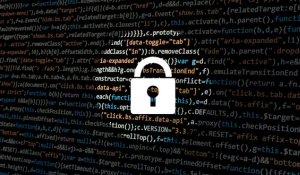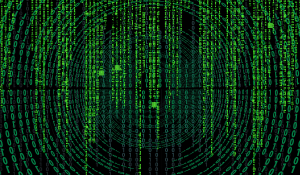6 min read
Ransomware 101: A Comprehensive Guide to Defend Your Data and Systems
 DriveLock
Aug 8, 2023 11:41:49 AM
DriveLock
Aug 8, 2023 11:41:49 AM

In today's rapidly evolving digital landscape, the menace of cyber threats looms larger than ever, with one particularly notorious adversary leading the pack: the ransomware attack. The pervasive and disruptive nature of ransomware attacks has turned them into a focal point of concern for individuals, businesses, and organizations worldwide.
Ausblick
- Ransomware is a malicious software designed to encrypt files or block access to computer systems until a ransom is paid, constituting a form of cyber extortion. It targets individuals, networks, or computer systems, often gaining access through phishing emails or software vulnerabilities.
- There are multiple types of ransomware, including Crypto Ransomware, Locker Ransomware, Scareware, Doxware/Leakware, Mobile Ransomware, Ransomworms, and Ransomware-as-a-Service (RaaS), each with distinct characteristics and methods of operation.
- Ransomware attacks typically unfold through various stages: delivery, payload execution, establishing persistence, encryption, ransom note display, ransom payment, and potentially decryption. Attackers often demand payments in cryptocurrencies to maintain anonymity.
- To mitigate the risk of ransomware attacks, both private users and businesses can adopt preventive measures. These include keeping software updated, installing reliable antivirus software, exercising caution with email attachments and links, backing up data regularly, and implementing robust cybersecurity practices such as employee education and multifactor authentication.
- Ransomware remains a persistent and evolving threat, demanding a proactive and multi-layered approach to cybersecurity. With the increasing sophistication of ransomware strains and the emergence of Ransomware-as-a-Service (RaaS), prevention, and preparedness through regular updates, secure backups, and user awareness are crucial in defending against these digital extortion schemes.
| TABLE OF CONTENT |
In this blog post, we will delve into the intricate world of ransomware attacks, exploring their methods, impact, and most importantly, effective strategies to safeguard against these digital extortion schemes.
A. What is a ransomware attack?
First, we have to explain what is a ransomware. Ransomware is a type of malicious software (malware) which is designed to encrypt a victim's files or lock them out of their computer system until a ransom is paid. It is a form of cyber extortion, where cybercriminals demand payment from the victim in exchange for restoring access to their data or system.
It targets computer systems, networks, or individuals with the intent of encrypting their data or blocking access to it. The attackers typically gain unauthorized access to the victim's system through phishing emails, malicious downloads, or exploiting vulnerabilities in software.
Once inside, the ransomware program encrypts the victim's files, rendering them inaccessible or unreadable, and displays a ransom message demanding payment in exchange for the decryption key. The attackers often demand payment in cryptocurrencies, such as Bitcoin, to maintain their anonymity. If the victim refuses to pay or fails to meet the attackers' demands, their data may be permanently deleted or leaked.
Ransomware attacks can have severe consequences such as: causing financial losses, operational disruptions, and compromising sensitive information. Prevention measures such as regular data backups, robust cybersecurity practices, and keeping software up to date are crucial in mitigating the risk of ransomware attacks.
B. 7 types of ransomware
Ransomware comes in various forms, and cybercriminals continuously develop new variants to evade detection and improve their malicious capabilities.
- Crypto Ransomware: This is the most prevalent type of ransomware. It encrypts the victim's files using sophisticated encryption algorithms, making the files inaccessible until a ransom is paid for the decryption key.
- Locker Ransomware: Instead of encrypting files, locker ransomware locks the victim out of their computer or mobile device, effectively denying access to the entire system. This type of ransomware often displays a full-screen warning with ransom demands.
- Scareware: Scareware is a less sophisticated form of ransomware that displays alarming pop-up messages or fake security alerts to trick users into paying for fraudulent software or services they don't need.
- Doxware/Leakware: Also known as "double extortion" ransomware, doxware not only encrypts the victim's files but also threatens to release sensitive or confidential data unless the ransom is paid.
- Mobile Ransomware: Mobile ransomware targets smartphones and other mobile devices, locking them or encrypting files to demand a ransom. It can spread through malicious apps or compromised app stores.
- Ransomworms: These are self-propagating ransomware that can spread across networks without human intervention. Ransomworms combine the characteristics of ransomware and computer worms to infect multiple systems rapidly.
- Ransomware-as-a-Service (RaaS): As previously explained, RaaS is not a specific type of ransomware but rather a model that allows cybercriminals to rent or purchase ransomware from developers, making ransomware attacks more accessible to a wider range of attackers.
Find out more about different cyberattacks:
C. 10 examples of ransomware
-
CryptoLocker
One of the earliest and most notorious ransomware strains, CryptoLocker typically spreads through email attachments and malicious links. It encrypts files on the victim's computer and demands a ransom to decrypt them.
-
WannaCry
This ransomware gained worldwide attention in 2017 due to its rapid spread and high-profile targets, including healthcare institutions and government agencies. WannaCry exploits a vulnerability in the Windows operating system and uses a worm-like mechanism to infect other computers on the same network.
-
Locky
Locky is distributed through phishing emails containing infected Microsoft Office documents. Once opened, it encrypts files and appends them with a ".locky" extension, demanding payment in Bitcoin for decryption.
-
Petya/NotPetya
Petya and its derivative, NotPetya, are unique ransomware that encrypts the Master Boot Record (MBR) of the victim's system, making it unbootable. It spreads through infected software updates and also by exploiting the same vulnerability as WannaCry.
-
Ryuk
Ryuk is a targeted ransomware that primarily targets organizations and businesses, demanding high ransom payments. It often comes after an initial infection with Emotet or TrickBot, which help facilitate its distribution.
-
GandCrab
GandCrab was one of the most prevalent ransomware families before its operators retired in 2019. It was sold as a ransomware-as-a-service (RaaS) model, allowing other cybercriminals to use it for a share of the profits.
-
Maze
Maze is known for its double-extortion technique. In addition to encrypting files, it exfiltrates sensitive data from the victim's system, threatening to publish it if the ransom is not paid.
-
REvil/Sodinokibi
REvil, also known as Sodinokibi, is another ransomware-as-a-service operation that emerged around 2019. It is commonly distributed through exploit kits and phishing campaigns.
-
DoppelPaymer
DoppelPaymer ransomware targets large enterprises and corporations. It uses sophisticated encryption methods and often threatens to leak sensitive data if the ransom is not paid.
-
Conti
Conti is a variant of Ryuk ransomware. It is designed to attack and extort money from corporate networks, often demanding large sums for decryption.
D. How does a ransomware attack work?
1. Delivery:
- Phishing Emails: One common method of delivery is through phishing emails. Attackers send emails that appear legitimate, often with enticing subject lines or urgent messages, to trick recipients into opening malicious attachments or clicking on malicious links.
- Exploit Kits: Another approach involves using exploit kits, which are malicious toolkits that exploit vulnerabilities in software or operating systems. When a user visits a compromised website, the exploit kit scans for vulnerabilities and delivers the ransomware payload if it finds a suitable entry point.
2. Payload Execution:
Once the initial infection vector is successful, the ransomware's payload is executed on the victim's system. This payload could be a standalone executable file or a script embedded within another file.
3. Establishing Persistence:
The ransomware may attempt to establish persistence on the infected system, ensuring it can continue to operate even after a reboot or attempted removal. This may involve modifying system settings, creating new startup entries, or installing rootkit-like components.
4. Encryption:
After gaining a foothold on the victim's system, the ransomware starts encrypting files using strong encryption algorithms. It often targets common file types, such as documents, images, videos, databases, and more. The encryption process renders the files inaccessible to the victim without the decryption key.
5. Ransom Note:
Once the encryption is complete, the ransomware typically leaves a ransom note on the victim's computer or displays it on the screen. This note informs the victim that their files are encrypted and provides instructions on how to pay the ransom to obtain the decryption key. The note may also include threats of data deletion or increased ransom amounts if the payment deadline is not met.
6. Ransom Payment:
The attackers usually demand payment in cryptocurrencies, such as Bitcoin, to make it more difficult to trace the transaction back to them. Victims are instructed on how to purchase the required amount of cryptocurrency and send it to a specific address controlled by the attackers.
7. Decryption (Possibly):
In some cases, if the victim complies with the ransom demand, the attackers may send the decryption key or tool to unlock the encrypted files. However, there's no guarantee that paying the ransom will result in the recovery of the files, as some attackers may not provide the decryption key or may provide a faulty one.
E. How to prevent ransomware attacks in 2024 - 14 tips
Here you will find out how to prevent ransomware attack are that private users and businesses can take to protect themselves against ransomware attacks:
- Keep software and operating systems up to date with the latest security patches.
- Install and regularly update reliable antivirus and anti-malware software.
- Exercise caution while clicking on links or downloading attachments in emails, especially from unknown senders.
- Be wary of suspicious actions such as unexpected emails, especially those requesting personal information or containing urgent demands.
- Regularly back up important data on an external hard drive or cloud storage.
- Enable automatic backups whenever possible to ensure data is continuously protected.
- Educate employees about best practices for cybersecurity and train them to recognize phishing emails or suspicious websites.
- Implement a robust and layered security system, including firewalls, intrusion detection and prevention systems, and strong access controls.
- Regularly update and patch all software, including operating systems, applications, and plugins.
- Conduct regular security assessments and vulnerability scans to identify and address any weaknesses in the network.
- Implement strong password policies and encourage the use of multifactor authentication.
- Restrict user privileges to minimize the impact of a potential breach.
- Conduct regular data backups and ensure they are stored offline or in secure, isolated environments.
- Develop and regularly test an incident response plan to effectively respond to and recover from a ransomware attack.
Ransomware remains a persistent and evolving threat that continues to wreak havoc on individuals, businesses, and organizations worldwide. The ever-increasing sophistication of ransomware strains, coupled with the rise of Ransomware-as-a-Service (RaaS), demands a proactive and multi-layered approach to cybersecurity. Protecting against ransomware requires regular software updates, strong security measures, and user awareness to identify and avoid phishing attempts.
Additionally, maintaining secure and frequent data backups is crucial to ensure resilience against ransomware attacks. By staying vigilant, well-informed, and implementing robust cybersecurity practices, we can better defend ourselves and our digital assets against the menace of ransomware. Remember, prevention and preparedness are our best weapons in the battle against ransomware's malicious grip.
Posts by category
- #Blog (84)
- Cyber Security (69)
- IT Security (42)
- Endpoint Protection (37)
- Cyberattack (35)
- #Press (23)
- Security Awareness (22)
- #News (21)
- Encryption (19)
- Zero Trust (17)
- Application Control (13)
- Malware (12)
- Endpoint Security (11)
- Data Security (9)
- BitLocker Management (7)
- Device Control (7)
- Partner (7)
- Phishing (6)
- Release (6)
- data protection (6)
- Access Control (5)
- Cloud (4)
- Geräteschutz (4)
- Managed Security Service (4)
- Multi Factor Authentication (4)
- Ransomware (4)
- Whitelisting (4)
- Certifications (3)
- Cyber threats (3)
- Home Office (3)
- Remote Work (3)
- Vulnerability Management (3)
- Defender Management (2)
- IT Grundschutz (2)
- Risk & Compliance (2)
- Smartcards (2)
- Virtual Smartcards (2)
- log4j (2)
- Bad USB (1)
- Cyberrisiken (1)
- Defense (1)
- Essential 8 (1)
- Firewall (1)
- Healthcare (1)
- IIoT (1)
- Multi-Faktor-Authentifizierung (1)
- Trainings (1)
- industry (1)

From Myth to Malware: The Evolution of Trojan Horse Viruses
In the vast landscape of cybersecurity threats, few adversaries have proven as cunning and adaptable as the Trojan horse virus. Like its namesake...




